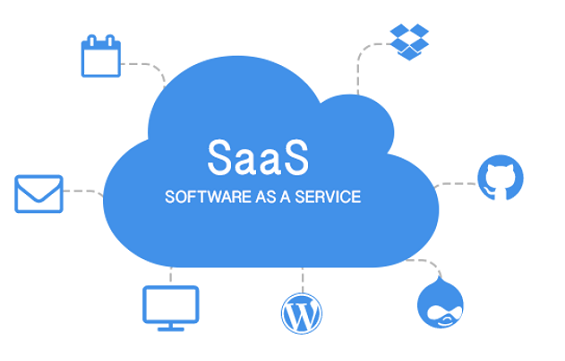A Strategic Approach to the SaaS Development Life Cycle

The Software as a Service (SaaS) model has rapidly transformed the software industry, offering businesses the ability to access, scale, and manage applications in the cloud without the need for traditional on-premises infrastructure. Building a successful SaaS product requires a structured approach, covering everything from initial concept to product maintenance. This journey is often referred to as the SaaS Development Life Cycle (SDLC). When strategically executed, it leads to a robust, scalable, and user-friendly product that can meet the ever-evolving needs of customers.
In this article, we’ll break down the key stages of the SaaS development life cycle, examine the benefits of Agile SaaS development, and provide insights into how to manage the SaaS product life cycle effectively.
What Is the SaaS Software Development Life Cycle (SDLC)?
The SaaS Software Development Life Cycle is a structured process that guides the development of cloud-based software. It begins with the conception of the product idea and extends through development, testing, deployment, and beyond. Unlike traditional software models, the SaaS SDLC places a heavy emphasis on continuous improvement and iterative development, driven by real-time customer feedback.
By following the SaaS SDLC, businesses can ensure that their products are not only functional but also scalable, reliable, and able to meet user demands over time.
Key Stages of the SaaS Development Life Cycle
Let’s walk through the core stages of the SaaS development life cycle:
1. Planning and Market Research
The foundation of any successful SaaS product lies in thorough planning and market research. This stage is critical for defining the product’s objectives, target audience, and core functionality. It involves analyzing the competitive landscape, identifying market gaps, and understanding customer pain points.
During this phase, businesses must answer key questions:
- What problem does the SaaS product aim to solve?
- Who are the potential users, and what are their expectations?
- How can the product differentiate itself from competitors?
This research informs the development team about the essential features that should be prioritized in the Minimum Viable Product (MVP) and the roadmap for future iterations.
2. Requirements Gathering and Product Design
With a clear understanding of the target market, the next step is to gather detailed requirements. This includes defining the features, user workflows, and technical specifications of the product. Collaboration between stakeholders—business analysts, developers, and designers—is crucial during this phase to ensure alignment on the product vision.
At this stage, teams should also create wireframes or prototypes to visualize the user experience (UX) and interface (UI) of the SaaS product. User feedback on these early designs is invaluable in shaping the final product.
3. Architecture and Technology Selection
Selecting the right technology stack and architecture is fundamental to building a scalable SaaS product. Cloud infrastructure, database management systems, and security protocols need to be carefully chosen to ensure the product is both flexible and secure.
Key considerations include:
- Choosing between a monolithic or microservices architecture.
- Deciding on cloud platforms such as AWS, Azure, or Google Cloud.
- Implementing robust security measures to safeguard user data.
4. Agile SaaS Development
Once the architecture is defined, the actual development process begins. Most SaaS companies adopt Agile development methodologies to manage the complexity of building software in an iterative and collaborative way. Agile SaaS development emphasizes continuous delivery, feedback, and improvement, allowing development teams to remain responsive to changes and customer needs.
In Agile, the development process is broken down into small, manageable sprints—typically lasting 1-2 weeks. During each sprint, developers build and release a portion of the product, allowing for ongoing user feedback and testing. This approach ensures a steady flow of improvements and mitigates the risk of large-scale failure upon release.
5. Testing and Quality Assurance (QA)
Testing is a crucial part of the SaaS development life cycle. Given the dynamic and evolving nature of cloud-based applications, the SaaS product must undergo rigorous testing across multiple stages of development. This includes:
- Unit Testing to validate individual components.
- Integration Testing to ensure the system works seamlessly.
- Performance Testing to assess the product’s scalability and speed under varying loads.
- Security Testing to verify data protection and regulatory compliance.
Automated testing is often utilized to accelerate the testing process, especially in an Agile environment where frequent releases are common.
6. Deployment and Cloud Infrastructure Setup
With development and testing completed, the SaaS product is ready for deployment. Unlike traditional software, which is deployed on individual machines, SaaS products are hosted on cloud servers. This allows for easier scaling, updates, and maintenance.
The deployment phase involves setting up the cloud infrastructure, configuring databases, load balancers, and integrating the application with third-party services or APIs. Many SaaS companies also implement Continuous Integration/Continuous Deployment (CI/CD) pipelines to streamline the deployment process and ensure that updates can be rolled out with minimal disruption to users.
7. Post-Launch Monitoring and Maintenance
The SaaS development life cycle doesn’t end at launch. In fact, post-launch monitoring is one of the most important aspects of SaaS product management. This phase involves monitoring user behavior, collecting feedback, and analyzing performance metrics to identify bugs or areas for improvement.
Additionally, the SaaS model requires ongoing updates, security patches, and feature enhancements to stay competitive and meet customer expectations. Continuous monitoring and maintenance ensure that the SaaS product remains reliable, scalable, and up-to-date.
SaaS Product Life Cycle: Beyond Development
After the initial launch, the SaaS product life cycle kicks in. This life cycle focuses on managing the product’s growth, maturity, and eventual decline. The key stages include:
- Introduction: The product is introduced to the market with its core features. Marketing and user acquisition efforts are critical at this stage.
- Growth: As the user base grows, new features and enhancements are introduced based on customer feedback.
- Maturity: The product becomes stable, and development focuses more on optimization and customer retention.
- Decline: Over time, the product may face competition or technological advancements, leading to decreased user engagement.
By carefully managing the product throughout its life cycle, businesses can maximize the product’s lifespan and profitability.
The Role of Agile SaaS in Modern Development
The Agile methodology has revolutionized the SaaS development process, providing a flexible and iterative framework that is ideal for cloud-based software. Agile allows development teams to respond quickly to market changes, implement new features based on user feedback, and deploy updates without significant downtime.
In Agile SaaS, customer feedback is integrated into the development cycle early and often. This approach ensures that the SaaS product remains aligned with user needs and delivers consistent value over time.
Conclusion
The SaaS development life cycle is a comprehensive process that requires careful planning, strategic execution, and continuous improvement. By adopting Agile methodologies, businesses can build scalable, secure, and user-friendly saas product lifecycle that meet the demands of modern users. Whether you’re developing a new SaaS solution or managing an existing product, understanding the SaaS SDLC and product life cycle is key to success.



